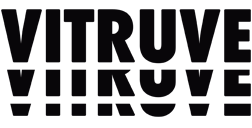17 de April de 2025
Kettlebell Snatch: Exercise Guide, Tips and Benefits
Do you want to develop explosive power, grip strength, and full-body coordination in a single movement? The kettlebell snatch delivers all of that and more. As one of the most dynamic movements in Strength and Conditioning, it’s a favorite among coaches, athletes, and tactical professionals for building strength, endurance, and resilience. This guide breaks down how to perform the kettlebell snatch properly, its benefits, and how to integrate it into your training program.
What Is the Kettlebell Snatch?
The kettlebell snatch is a high-velocity, full-body movement that takes a kettlebell from a swing position all the way overhead in one fluid motion. Unlike Olympic barbell snatches, the kettlebell snatch is typically performed for higher reps and combines both power and conditioning. It engages the posterior chain, core, shoulders, and grip while developing cardiovascular capacity and muscular endurance.
Its ballistic nature requires precise technique, timing, and rhythm, making it both a skill-based and performance-driven exercise. It’s a staple in kettlebell sport (Girevoy), military-style fitness programs, and modern athletic Strength and Conditioning routines.
How to Do the Kettlebell Snatch Properly
Start with the kettlebell a foot in front of you. Hinge at the hips, grip the handle with one hand, and hike the bell back between your legs like a kettlebell swing. Drive through your hips to generate force and guide the kettlebell upward. As it travels past chest height, pull your elbow back slightly, then punch your hand through to a locked-out position overhead.
The bell should rotate around your hand, not flip over it. Finish with your bicep close to your ear, wrist neutral, and knees softly locked. Reverse the motion by letting the kettlebell fall in a controlled arc, catching it in the hinge position for the next rep. Keep reps smooth and explosive, emphasizing precision over speed.

Muscles Worked by the Kettlebell Snatch
- Glutes and Hamstrings: Power the hip extension phase of the lift.
- Core: Stabilizes the torso and controls the kettlebell’s movement.
- Shoulders and Upper Back: Help decelerate and stabilize the bell at lockout.
- Forearms and Grip: Work continuously to control the bell.
- Calves and Quads: Assist during the drive and catch phases.
This total-body movement builds integrated strength and conditioning, making it ideal for explosive sports performance and general fitness.
Benefits of the Kettlebell Snatch
The kettlebell snatch provides a powerful mix of strength, endurance, and power development. It trains the entire posterior chain, develops shoulder stability, and enhances cardiovascular fitness—especially when performed for time or high reps. It improves grip and forearm strength while training athletes to generate and absorb force efficiently.
In the context of Strength and Conditioning, kettlebell snatches are excellent for power endurance blocks, conditioning circuits, and contrast training. Their ballistic tempo also makes them a great tool for fatiguing the neuromuscular system under control, which is key when managing fatigue in performance athletes.

Common Mistakes to Avoid
- Over-Gripping: Causes early fatigue and impairs fluid motion.
- Lifting with the Arm: Instead of driving from the hips, many athletes mistakenly muscle the weight up.
- Poor Timing in the Punch-Through: This results in the bell crashing on the wrist rather than landing softly.
- Neglecting the Lockout: Full elbow extension and shoulder stabilization are key for performance and safety.
Variations of the Kettlebell Snatch
- Double Kettlebell Snatch: Advanced variation using two bells.
- Hang Kettlebell Snatch: Begins from the hang position instead of the floor.
- Dead Start Snatch: Each rep starts from a dead stop, improving power and control.
- Snatch to Press: Adds a strict press after each snatch for strength-endurance.
How to Include Kettlebell Snatches in Your S&C Workout
Kettlebell snatches can be integrated into conditioning circuits, power-focused warm-ups, or contrast sets following heavy lifts. They’re especially effective in velocity-based environments, where movement speed and efficiency matter. Athletes using Velocity Based Training (VBT) devices, such as a VBT encoder or barbell velocity tracker, can benefit by improving the speed-strength qualities required in explosive lifts.
This movement complements velocity training, especially when used to target specific velocity zones or manage fatigue. While kettlebell snatches are not tracked with traditional barbell encoders, the movement principles align with Velocity Based Training goals—making them a smart supplemental exercise.
FAQs About the Kettlebell Snatch
What are the benefits of training the kettlebell snatch?
The kettlebell snatch is a full-body powerhouse that builds explosive strength, endurance, coordination, and grip—all in one fluid movement. It activates the posterior chain (glutes, hamstrings, back), engages the core, and elevates heart rate fast, making it both a strength and conditioning tool. Over time, it can improve shoulder stability, boost athletic performance, and enhance cardiovascular capacity without needing long workouts.
Why are kettlebell snatches so popular?
Snatches combine intensity, fluidity, and efficiency—three ingredients that make them ideal for both athletes and fitness enthusiasts. They offer a massive return on investment: in just a few reps, you work multiple muscle groups, challenge your cardiovascular system, and sharpen your motor skills. Plus, they require minimal equipment and space, which makes them perfect for gyms, training facilities, and even home setups.
Any tips on learning the kettlebell snatch?
Yes—start with the basics. Master the kettlebell swing and the one-arm high pull before progressing to the snatch. Use a lighter kettlebell while learning to nail the timing and avoid common mistakes like over-gripping or letting the bell crash into your forearm. Focus on a strong hip hinge, a relaxed but controlled pull, and punching your hand through at the top to guide the bell smoothly overhead. Work with a coach or film yourself to refine technique as you go.
The kettlebell snatch is a high-skill, high-reward movement that delivers unmatched benefits in power, conditioning, and functional strength. Whether you’re an athlete, coach, or recreational lifter, it deserves a place in your Strength and Conditioning toolbox.
